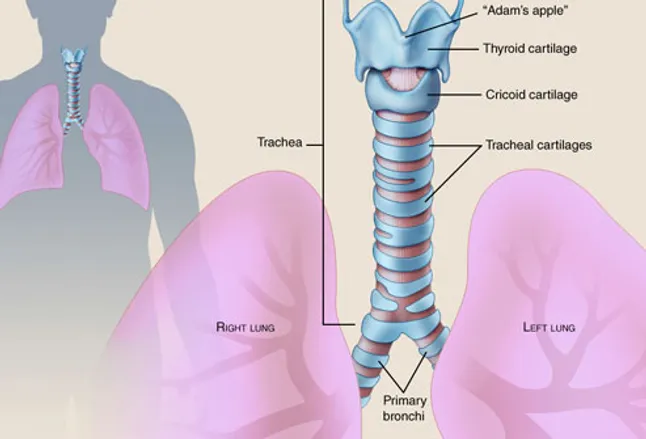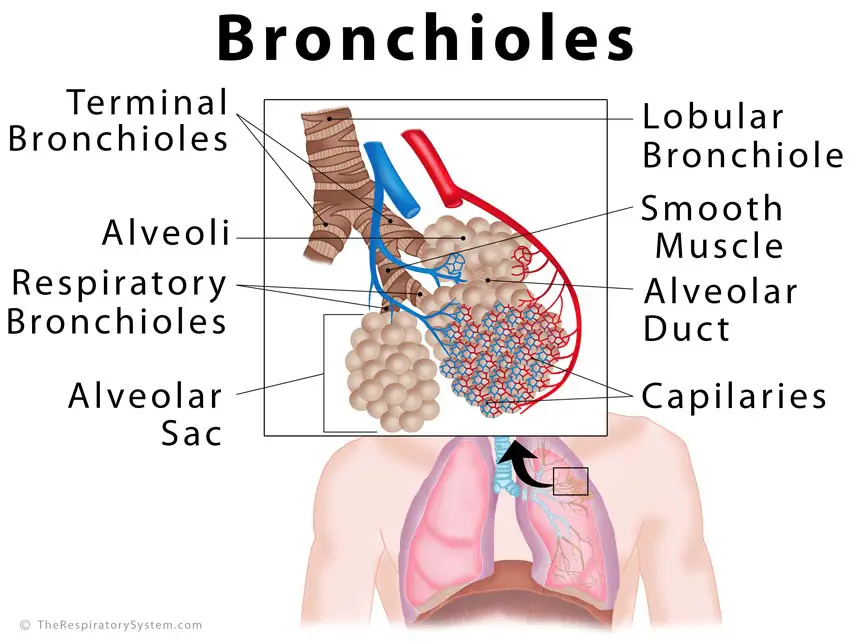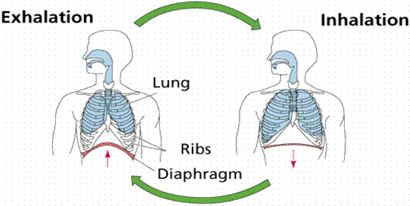ALL POSSIBLE QUESTIONS WITH THEIR AUTHENTIC ANSWERS
2ND LECTURE
GASEOUS EXCHANGE IN HUMAN
1.How gaseous exchange is carried out by humans and other higher animal?
Ans:The gaseous exchange is carried out by RESPIRATORY SYSTEM.
Respiratory system is divided into two parts:
i- The air passageway
ii- Lung
2 Define Respiratory system?
The lungs are a pair of spongy, air-filled organs located on either side of the chest (thorax). The trachea (windpipe) conducts inhaled air into the lungs through its tubular branches, called bronchi. The bronchi then divide into smaller and smaller branches (bronchioles), finally becoming microscopic.
FUNCTION
The main function of the lungs is the process of gas exchange called respiration (or breathing). In respiration, oxygen from incoming air enters the blood, and carbon dioxide, a waste gas from the metabolism, leaves the blood. A reduced lung function means that the ability of lungs to exchange gases is reduced.A
3.What is Air passageway?
Definition:
The air that we breathe in enters the nose or mouth, flows through the throat (pharynx) and voice box (larynx) and enters the windpipe (trachea). The trachea divides into two hollow tubes called bronchi.
Explanation:
The air passageway consist of the parts through which the outside air comes in the lungs and after the exchange of gases it goes out.
COMPONENTS OF AIR PASSAGEWAY:
Nasal cavity
Nostrils
Phyranx
Epiglottis
Glottis
Trachea
Bronchiii
Bronchioles
Alveoli
4. Describe Nasal cavity?
The nose encloses the Nasal cavity.
It opens to the outside through the opening called Nostrils
It is divided into two portions by a wall.
Each portion is lined by fine hairs and mucus.
5.what is the function of fine hairs and mucus in Nasal cavity?
It filters the dust particles from the air.
The mucus also moisten and warms the incoming air
It keeps its temperature nearly equal to the that of body.
6. What is phyranx?
Phyranx is a muscular passage and is common to both food and air.
It extends to the opening of oesophagus and larynx.
The air goes from phyranx into the layranx.
7.Define Glottis?
Glottis is a narrow opening at the floor of phyranx.
It leads phyranx to layranx.

Function:
The three most important and highly relevant functions of the glottis are to facilitate ventilation, facilitate phonation, and provide airway protection
8. What do you know about larynx?
The larynx is a box ,made up of Cartilage.
It is present between pharynx and trachea.
It is also called the voice box.
| Add caption |
Larynx (Voice Box) Definition, Function, Anatomy, and Diagram
9.How vibration produce sounds?
There are two pairs of fibrous bands called Vocal Cords are stretched across the larynx.
The vocal cords vibrate when the air passes through them.
This vibration produces sounds.
10.What is Trachea?
Trachea is a long tube about 12 cm , which lies in front of the oesophagus.
Larynx continue to the trachea, which is also called Windpipe.
There are C- shaped cartilaginous rings in the wall of trachae .
On entering the chest cavity, the trachea divides into two smaller tubes called Bronchiii.

11. What is cartilage and write it's role in trachae?
Definition:
Cartilage is a resilient and smooth elastic tissue, a rubber-like padding that covers and protects the ends of long bones at the joints and nerves, and is a structural component of the rib cage, the ear, the nose, the bronchial tubes, the intervertebral discs, and many other body components.
The cartilage keep the Trachea from collapsing even when there is no air in it.
12. What is Bronchiii and write down it's function?
On entering the chest cavity, the trachea divides into two smaller tubes called Bronchiii.
The bronchi also have cartilaginous plates in their walls
Each bronchus enters into the lungs of its sides and then divides into smaller branch
13.Define Bronchioles and it's function?
The Bronchiii continue dividing in the lungs until they make several fine tubes called bronchioles.
The Bronchioles progressively lose the cartilage as they become narrower.
Function:

The bronchioles carry oxygen rich air into the lungs and carry carbon dioxide rich air out of the lungs, thereby aiding in the processes of breathing and respiration. The smooth muscle that surround the bronchioles can constrict or dilate the airway, which can aid in getting the proper amount of oxygen into the blood
14. Define Alveolar duct and its function?
Alveolar duct:
The Bronchioles end as fine tubules called the Alveolar duct.
Each alveolar duct opens into a cluster of pouches called alveoli.
The alveoli form the respiratory surface in human body.
Function:
The alveolar sacs are sacs of many alveoli, which are the cells that exchange oxygen and carbon dioxide in the lungs. The alveolar ducts assist the alveoli in their function by collecting the air that has been inhaled and transported through the tract, and dispersing it to the alveoli in the alveolar sac.
15. Define the term Alveolus ?
Each Alveolus is a sac-like structure lined by a single layer of epithelial cells.
It is bound on the outside by a network of capillaries.
16. Describe the whole process of deoxygenated blood to oxygenated blood?
The pulmonary artery from the heart containing deoxygenated blood enters the lung and branches into arterioles and then into capillaries which surround the alveoli .
These then join together to form the venules which form pulmonary vein .
The vein carries the oxygenated blood back to the heart.
17. How specific sound results in speech?
The vibration in vocal cords and the movement of lips, tongue and jaws produce specific sounds which result in speech
Speech
Speech is an ability that only human are gifted with and this is one of the characteristics which has put human beings superior to all
18. What is the role of ciliated and glandular cells in trachea and Bronchiii?
GLANDULAR CELLS
Glandular cells secrete mucus which moisten the air and also traps any fine particles of dust or bacteria that have escaped from the Nasal cavity
CILIATED CELLS
The cilia beat with an upward motion do that the foreign particles along mucus are sent to the oral cavity from where it may be either swallowed or coughed out.
THE LUNGS
1.Describe Lungs ?
The lungs are a pair of spongy, air-filled organs located on either side of the chest (thorax). The trachea (windpipe) conducts inhaled air into the lungs through its tubular branches, called bronchi. The bronchi then divide into smaller and smaller branches (bronchioles), finally becoming microscopic.
FEATURES:
All the alveoli on one side constitute a lung.
There is a pair of lung in the thoracic cavity.
The chest wall is made up of 12 pairs of ribs and rib muscles called Intercostal muscles.
A thick muscular structure, called Diaphragm, is present below the lungs.
The left lung is slightly smaller and had two lobes
The Right lung is bigger with three lobes
2.Describe the function of membranes in lungs?
Each lung is enclosed by two membranes called the outer pleural membrane and the inner pleural membrane .The membrane encloses a fluid which provides lubrication for the free expanding and contracting movements of the lungs.




![REMOVAL OF EXTRA WATER FROM PLANTS [ homeostasis class 10]](https://blogger.googleusercontent.com/img/b/R29vZ2xl/AVvXsEghltzJYj7Z5EtxLIcImoD26OcuuS6j7_7EVh9J6M25y4mOZ1IkkU4o_jnXfU8Z9bCfcZx7XO6RJmC04QyGL9_nmq-w3LqzYYLEa7ldXDLqALx7ZcH9t15pB1rM2VLwr15JJAmuhEtvDOo/w680/TURGID.png)



0 Comments